![]()
If you love myths and legends, Assam is a must-visit. The stories surrounding Rang Ghar will fascinate and transport you to a world of history and mystery. These are the few myths and legends about Rang Ghar you must read before you visit.
Rang Ghar, the pride of Assam, isn’t just a marvel of architecture—it’s also a treasure trove of stories passed down through generations. Built during the Ahom dynasty, this historic amphitheater has inspired countless myths and legends that keep its legacy alive even today.
From tales of secret underground tunnels to whispers about royal feasts and cultural spectacles, Rang Ghar’s history is as fascinating as it is mysterious. Let’s explore five captivating myths and legends surrounding this iconic monument that make it so much more than just a historic site.
Unveiling Myths and Legends about Rang Ghar
Myth #1: The Hidden Treasure Underneath Rang Ghar
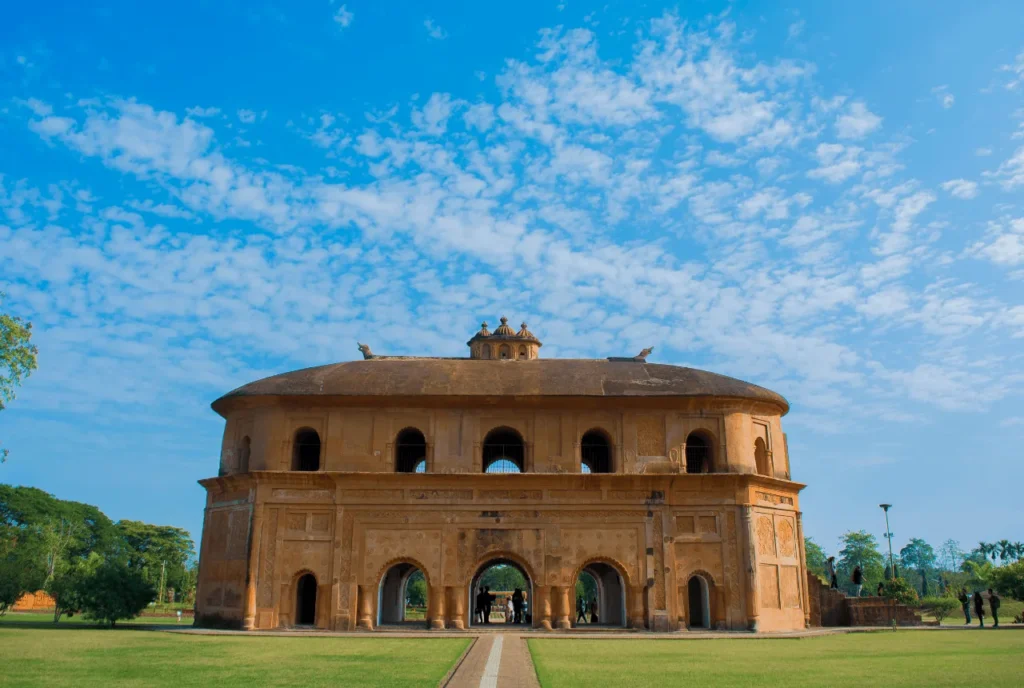
This legend has intrigued locals and visitors for centuries. It’s said that a hidden treasure lies buried beneath the foundations of Rang Ghar—gold coins, jewels, and priceless artifacts, all left to protect the Ahom dynasty’s legacy. Stories suggest that secret chambers or tunnels hold these treasures, but despite several minor excavations, nothing has ever been discovered. Whether it’s true or not, the idea of a hidden fortune keeps this myth alive, adding an air of mystery to Rang Ghar’s already rich history.
Myth #2: The Phantom Drummer’s Call
Imagine standing near Rang Ghar at night and hearing faint drumming sounds, as if someone is playing Bihu rhythms in the distance. This eerie phenomenon is a common story among locals, who call it the “Phantom Drummer’s Call.” While some believe it’s the work of spirits, others point to the wind moving through the amphitheater’s arched corridors, creating these rhythmic sounds. Either way, the legend ties Rang Ghar to the vibrant cultural roots of the Ahom dynasty, with Bihu music symbolizing joy and celebration in Assamese traditions.
Myth #3: The Secret Tunnel to the Palace
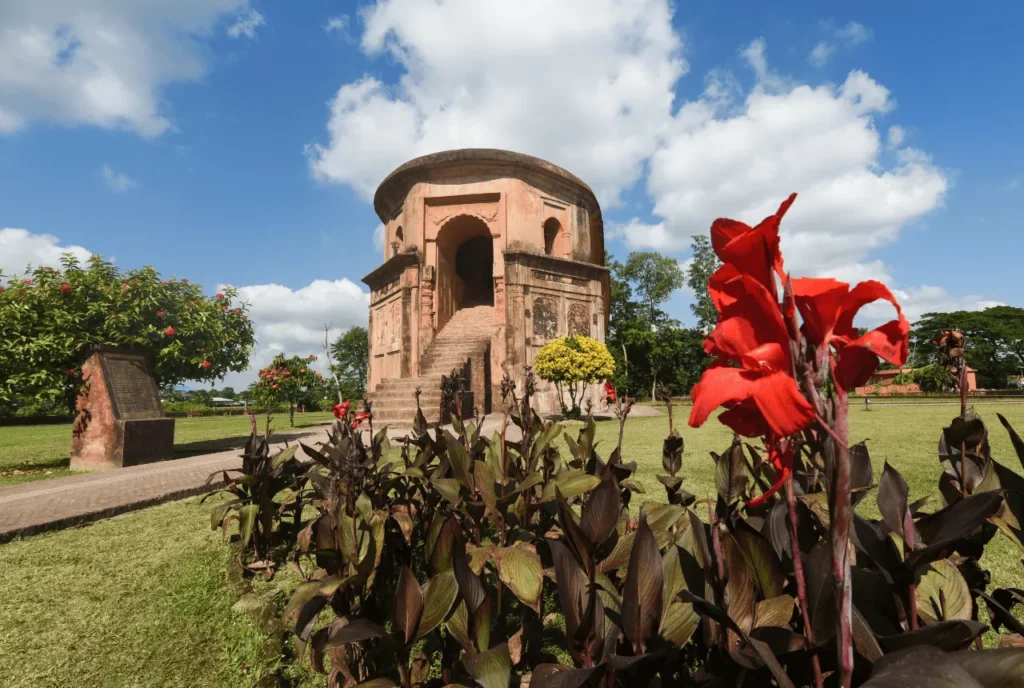
One of the most fascinating myths surrounding Rang Ghar is the belief that it’s connected to the royal Kareng Ghar or Talatal Ghar by a secret underground tunnel. Locals think this was a clever defensive strategy by the Ahom dynasty, allowing royals to escape in times of danger. Though some evidence of tunnel-like structures has been found around the area, archaeologists have yet to confirm a continuous underground link between these monuments. The idea of such a hidden passage only adds to the mystery and allure of Rang Ghar.
Myth #4: The Cursed Stone Carvings
Rang Ghar is famous for its intricate stone carvings, many of which depict crocodiles and floral designs. According to local legends, anyone who dares to tamper with or damage these carvings will face misfortune. The myth is tied to the belief that the carvings are more than just artwork—they represent the cultural and spiritual heritage of the Ahom dynasty. The stones are also made using a special mix of egg, rice, and mortar, making them unique in both form and function, further adding to their importance in local lore.
Myth #5: The Eternal Bihu Celebrations
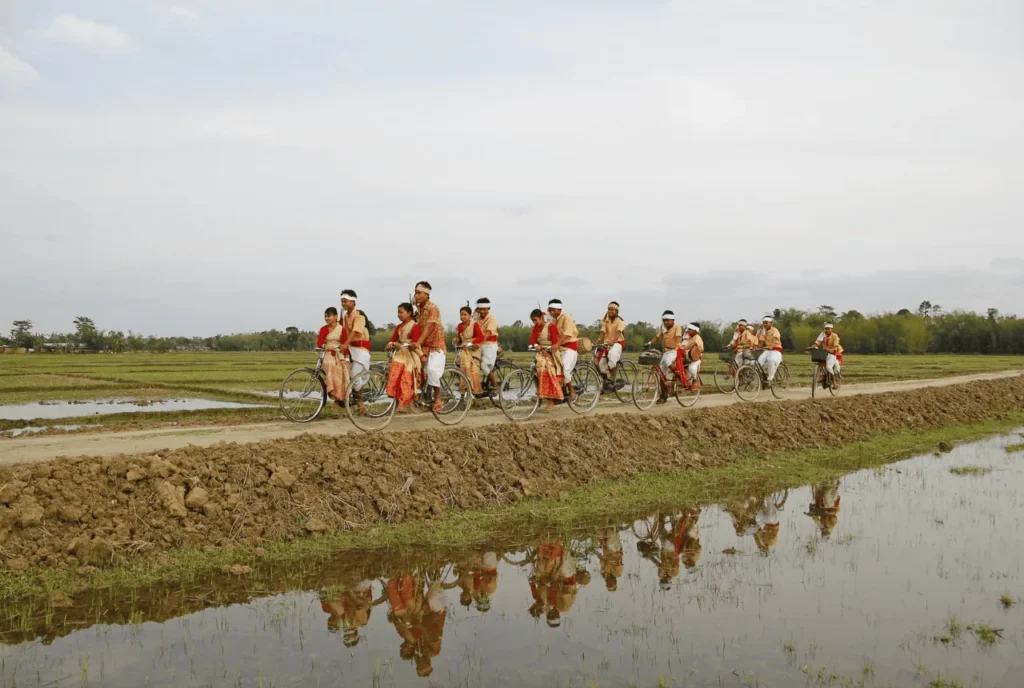
Perhaps one of the most enduring legends is that the spirit of Bihu dances never leaves Rang Ghar. It’s said that even when the amphitheater is empty, you can feel the rhythm of Bihu music echoing through the air. Rang Ghar was once the heart of grand celebrations during festivals like Rongali Bihu, where the Ahom kings would witness buffalo fights and cultural performances. Even today, the legend of these eternal celebrations adds to Rang Ghar’s reputation as a cultural hub, inspiring people to honor the traditions that live on within its walls.
Rang Ghar: A Glimpse into Assam’s Royal Past
The myths and legends about Rang Ghar go back to ancient times. Rang Ghar, built in the 18th century by Swargadeo Pramatta Singha, isn’t just a monument; it’s a window into Assam’s royal past. Originally constructed as a royal sports pavilion, Rang Ghar was the venue where dignitaries gathered to witness traditional sports and cultural events. Its unique architecture stands out with an inverted boat-shaped roof, beautifully decorated with crocodile carvings, and crafted from baked-brick masonry. Today, Rang Ghar is a living symbol of Assam’s rich history, and ongoing restoration efforts strive to preserve its historical charm while offering a better experience for modern-day visitors.
Cultural Significance and Conservation Efforts
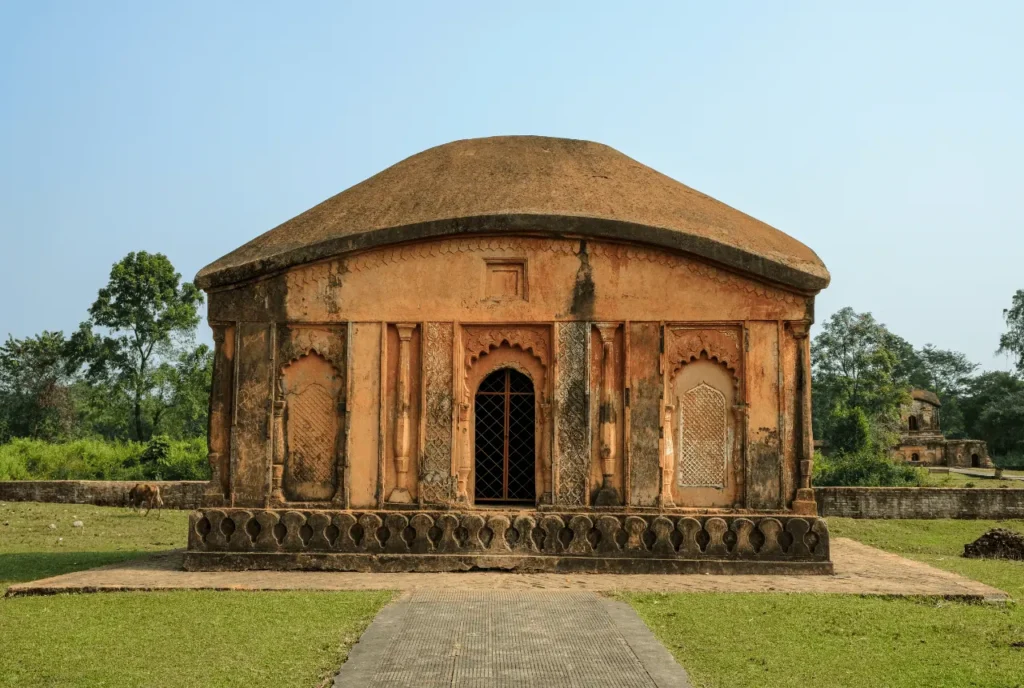
Rang Ghar represents the cultural elegance of Assam, dating back to the grandeur of the Ahom dynasty and still resonating in the present day. Myths and legends about Rang Ghar and its significance are immense, and the Archaeological Survey of India (ASI) plays a vital role in preserving this architectural marvel. The monument faces preservation challenges, including environmental wear and tear and the weathering of its bricks, but efforts are underway to tackle these issues. Modern conservation techniques are also being explored, such as augmented reality tours and interactive QR codes, making it easier for visitors to immerse themselves in Rang Ghar’s history.
Along with these technological initiatives, responsible tourism is encouraged to help minimize damage, while local events focused on heritage education aim to inspire a sense of pride and ownership in the community. These efforts ensure that Rang Ghar will continue to stand tall as a symbol of Assam’s royal past for generations to come.
Modern-Day Assam Celebrates Its Heritage
Rang Ghar has evolved into more than just a historical site—it’s a vibrant cultural center, especially during Assam’s festive seasons like Bihu. Local schools, including renowned institutions like International School Guwahati, take students on educational trips to explore the rich history and heritage of the region. These experiences help students connect with their roots and deepen their understanding of Assam’s cultural legacy.
Through collaborations between schools, historians, and tourism boards, Rang Ghar has become a hub for annual heritage walks, photography exhibitions, and seminars that celebrate its historical significance. Since the renovations post-2020, Rang Ghar’s infrastructure has been improved, ensuring better accessibility for tourists and visitors, making it easier than ever to experience the beauty and history of this monument.
Plan Your Visit to Rang Ghar
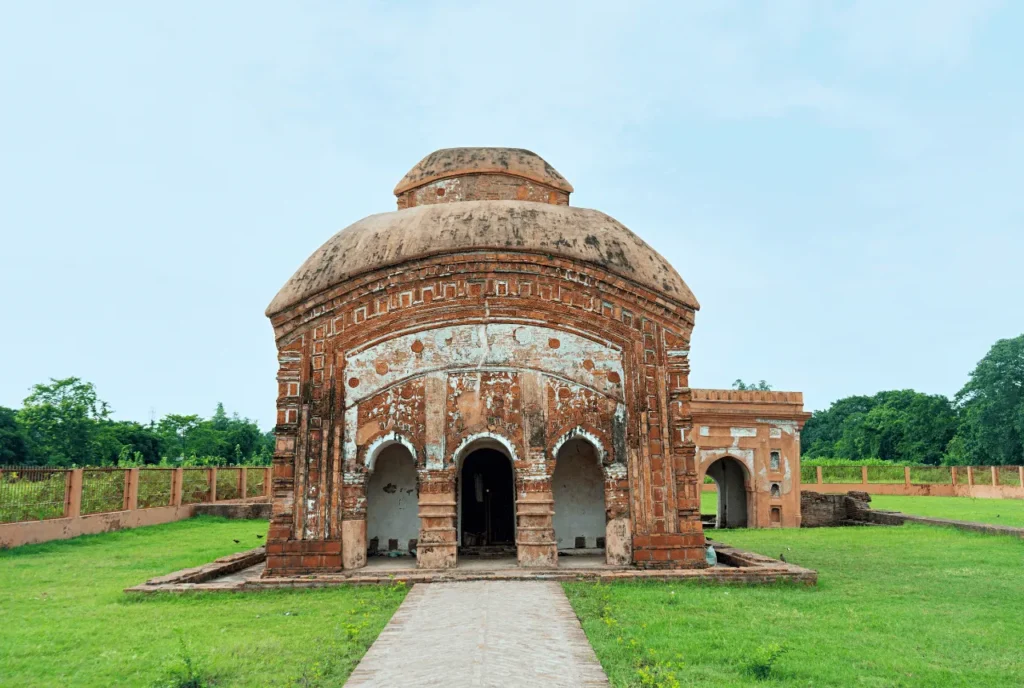
If you’re planning to visit Rang Ghar, the ideal time to go is from October to April, when the weather in Assam is pleasant and mild. While you’re in the area, don’t miss nearby attractions like Talatal Ghar, Kareng Ghar, and the serene Joysagar Lake (“Joysagar Pukhuri”), all rich in history and culture.
For an immersive experience, consider timing your visit with local festivals, which will offer a chance to see the monument in its full cultural splendor. Guided tours are available to give deeper insights into the myths and legends about Rang Ghar, enhancing your visit.
Remember to respect local customs, follow preservation guidelines, and avoid littering to help protect this historical gem for future generations. Your visit not only celebrates the heritage of Rang Ghar but also contributes to its continued preservation.
Conclusion
Exploring the myths and legends about Rang Ghar not only brings us closer to this architectural wonder but also deepens our connection to Assam’s vibrant culture. Each tale, whether about hidden treasures or phantom drummers, offers a glimpse into the traditions and values of the Ahom dynasty. By understanding and sharing these stories, we help preserve Assam’s rich history and cultural identity. Rang Ghar stands as a reminder that learning about our past is essential to protecting and cherishing it for the generations that follow.








